More businesses are choosing to stay open 24 hours a day. As a result, many would like to know what is shift work. Some industries are more inclined to shift work, such as the service and manufacturing sectors. Roles that usually work in shifts include call center representatives, servers, bartenders, cooks, housekeepers, firefighters, police officers, security guards, nurses, doctors, bus drivers, and warehouse workers. However, businesses in any industry can work in shifts. Scheduling shifts for your team across a 24-hour period is challenging but this article will show you how to schedule shifts.
Understanding Work Shift Schedules: Components That Matter

A work shift schedule outlines the times when each employee is scheduled to work. Some businesses choose to create shift schedules themselves, while others turn to shift scheduling software. The schedule includes the start and end times of shifts and break times. Creating employee shift schedules that work for all team members is a challenging task. As a result, many organizations use software to make work shift scheduling easier and improve employee experience.
Understanding Work Shift Schedules: Components That Matter
Shift length
Creating a shift schedule isn’t just about putting names into a calendar. It’s about syncing business needs with employee well-being and legal compliance.
Key components of effective shift scheduling include:
- Shift Length: Commonly 8 or 12 hours. Longer shifts may reduce turnover and increase continuity but must be carefully managed for fatigue.
- Schedule Format: Fixed (same every week) or rotating (changes weekly). Rotating shifts allow more equitable distribution of night/weekend work (like Panama schedule or 2-2-3 schedule, for example)
- Overtime Rules: Whether voluntary or mandatory, always ensure compliance with local labor laws.
- On-Off Patterns: Use strategic rotations such as 4-on-3-off or weekend-only shifts to balance workloads.
- Scheduling Policies: Document shift guidelines, call-in protocols, and rest periods clearly.

❓ How do shifts work?
Shift types vary by industry and operations. Here’s how they break down:
| Shift Type | Time Range | Common Industries |
|---|---|---|
| Early Morning | 4:00 AM – 8:00 AM | Farming, Warehousing, Logistics |
| Day | 9:00 AM – 5:00 PM | Retail, Admin, Corporate |
| Evening | 5:00 PM – 11:00 PM | Hospitality, Retail, Restaurants |
| Night | 11:00 PM – 6:00 AM | Security, Healthcare, Manufacturing |
| Split | Multiple Blocks | Hospitality, Transit, Event Staff |
Day shifts
A day shift typically occurs between 9 am and 5 pm. Day shifts are common in all industries, especially retail, where some stores are open during ‘normal’ working hours.
Evening shifts

Evening shifts typically start after 5 pm and are common in the hospitality industry, where bars and restaurants are usually open until midnight.
Learn in depth about hospitality staff scheduling in our guide!
Night shifts
Night shifts generally occur between 11 pm and 6 am. They are prevalent in industries that must be operational for 24 hours, including emergency services, security, transport, hospitality, etc.
Split shifts
A split shift involves dividing an employee’s day into two (or more) parts. This allows them to rest, attend appointments, or provide childcare in between shifts. Split shifts are most common in retail, hospitality, construction, and public transport.
Healthiest Shift Scheduling Practices
No schedule fits everyone, but a few rules of thumb lead to healthier work habits:

- Prioritize consistent start/end times
- Avoid back-to-back night then day shifts
- Rotate shifts clockwise (morning → evening → night)
- Allow 12–16 hours between shift changes
- Respect rest days – avoid stacking 6+ consecutive shifts
How to Schedule Shifts: Step-by-Step
Use this modern framework to build smarter, employee-friendly shift schedules:

1️⃣ Identify Job Roles and Tasks
Clarify what each role involves and the tasks per shift.
2️⃣ Track Activity Patterns
Look at your busiest and slowest hours to determine peak staffing windows.
3️⃣ Match Staff Availability
Collect and track employee preferences, skills, and availability before assigning shifts.
4️⃣ Forecast Demand
Use historical trends and events (e.g. holidays, launches) to adjust coverage.
5️⃣ Choose a Scheduling Method
📊 Google Sheets? 📝 Whiteboard? ❌ Not in 2025. Use modern tools like Shifts by Everhour.
6️⃣ Communicate Clearly
Ensure all employees can view, accept, or swap shifts digitally with notifications enabled.
Shifts by Everhour
An excellent shift work scheduler to consider is Everhour. The employee time tracking tool has launched Shifts by Everhour, a shift management software for shift-based teams and non-desk employees.
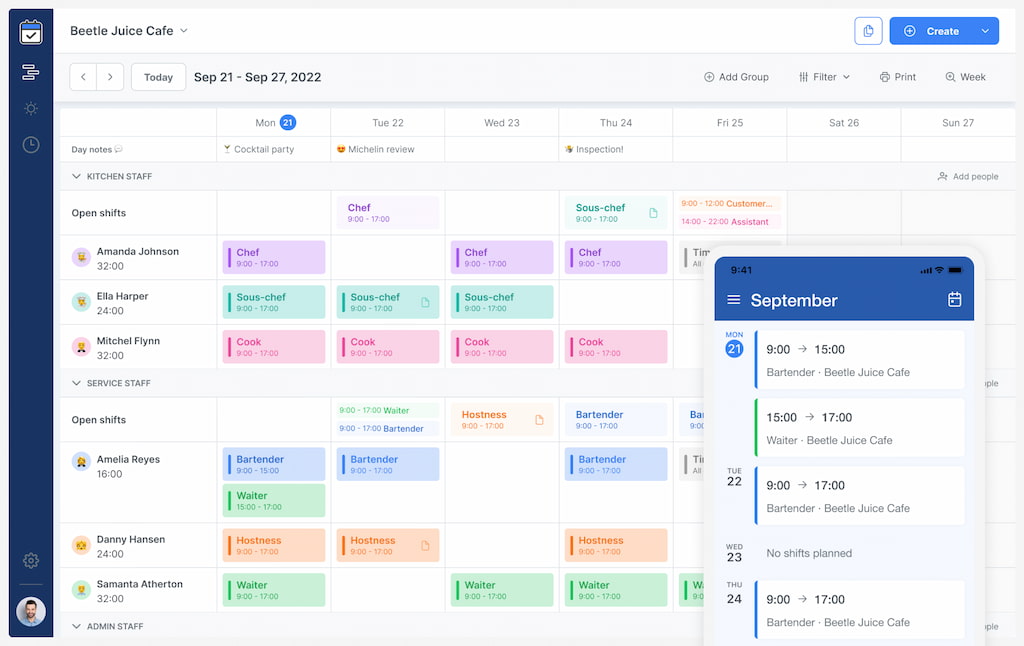
How can employee scheduling help my business?
Shifts by Everhour enables you to access shift schedules anywhere at any time. As long as you can connect to the internet, you can access shift schedules to create new shift schedules and make changes to existing ones. In addition, you can create the ideal schedule in minutes, instead of spending many hours that could have been better used elsewhere. Spend the time you save on more important tasks that require your attention.
Shifts also alerts you when there is an error with time off, hours worked, or other shift variables. If you accidentally schedule something incorrectly, the shift scheduling software will let you know that there is a mistake. Finally, working in schedules outside of 9 am to 5 pm may be better suited to some of your team. As a result, a reliable work shift scheduler can help employees work at a time that suits them best, meaning your team feels more job satisfaction.
How to Schedule Shifts: Step-by-Step
Shifts allows you to set up work shift schedules in minutes. Here are the key features that make this possible:
Workplaces: Set up several workspaces if your business operates in various locations and regions or if you need to build separate schedules for different teams and departments.
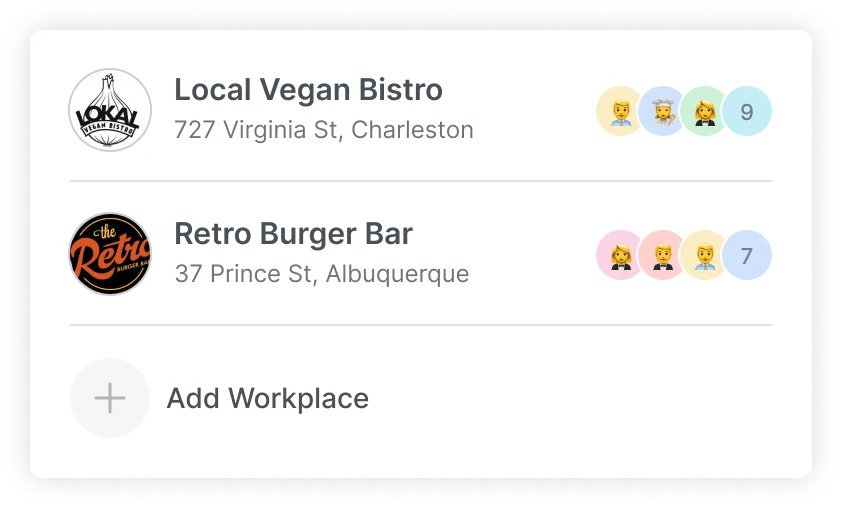
Employees: Add as many employees to the scheduler as you need. Plus, you can add people to the schedule before inviting them to access the account, giving you time to ensure everything works.
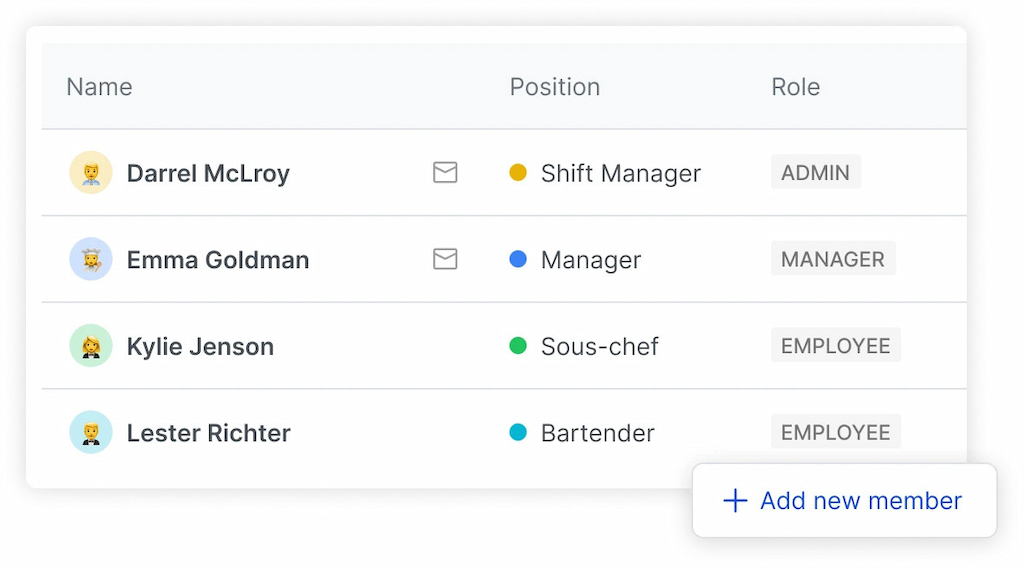
Groups: Organize teams into groups and name a group (such as a job type or a specific location) to keep everything as organized and clear as possible.
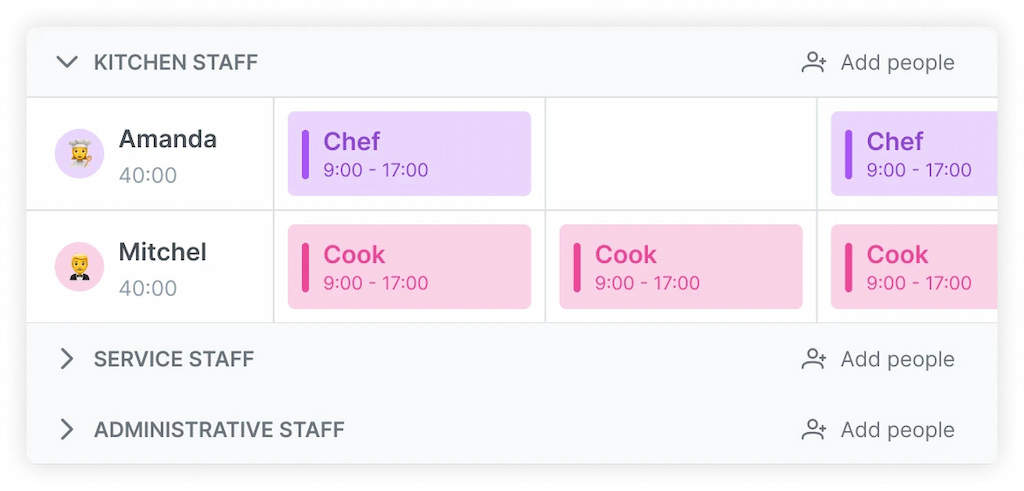
Shifts: Create, edit and manage employee shifts with ease. You can create shifts from scratch or copy previous shift inputs to save time. Plus, you can avoid schedule conflicts with up-to-date employee availability and time-off requests. If shifts end up overlapping, the software will notify you so you can amend the schedule.
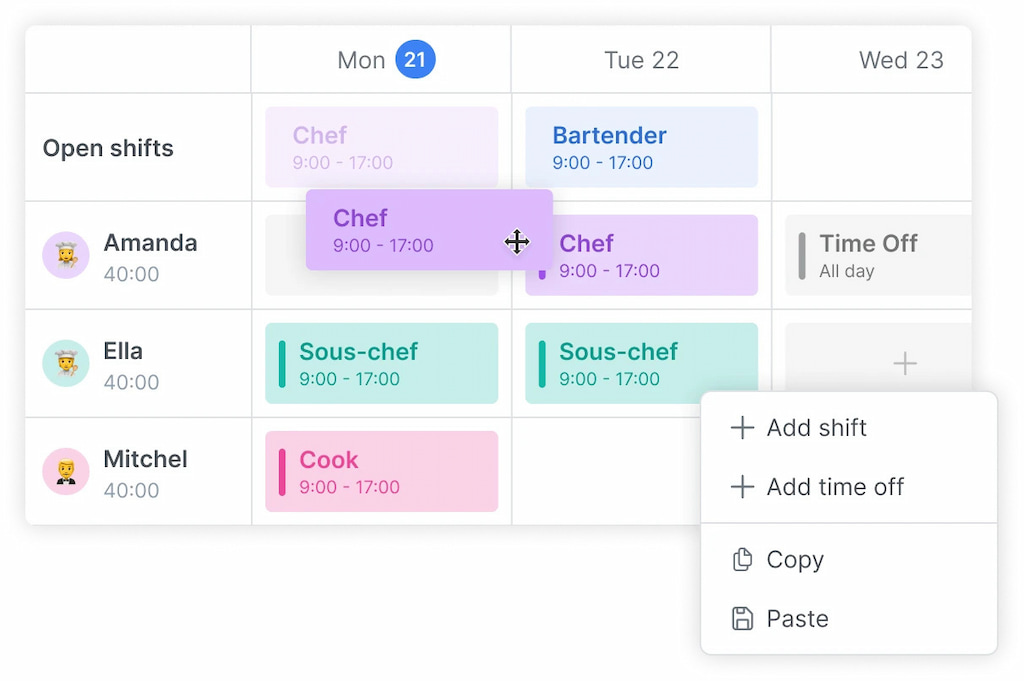
Day notes: Context is important. With the day notes feature, you can include essential notes about the shift schedule for each day of the week.
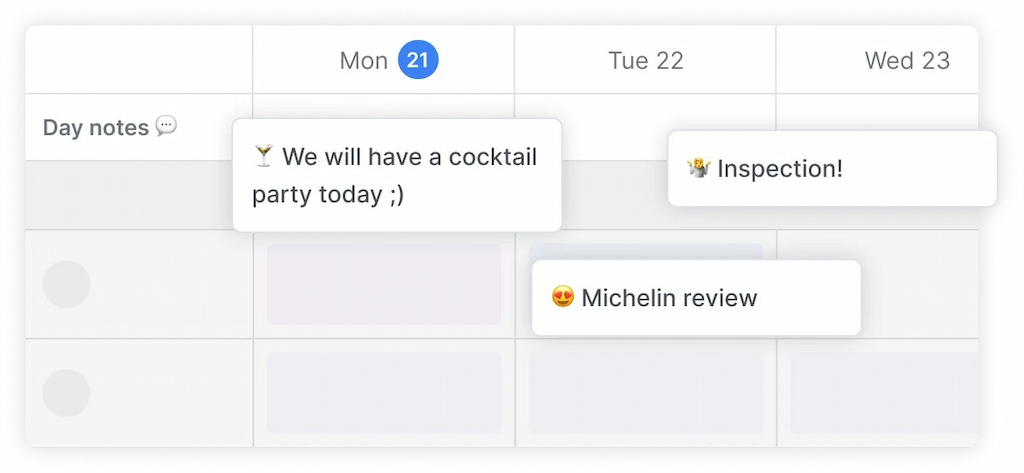
With Shifts by Everhour, shift working scheduling has never been more straightforward. Even better, you can try Shifts for free to see if it works for your business! The platform offers many useful features that allow businesses to supercharge their efficiency and productivity.
Top Challenges in Employee Shift Scheduling
❗Problem: Burnout from excessive night shifts
✅ Fix: Rotate evenly, avoid back-to-back nights
❗Problem: Overlapping shift conflicts
✅ Fix: Use smart schedulers with conflict alerts
❗Problem: Inaccurate labor cost tracking
✅ Fix: Tie shifts to payroll integrations or hourly rate tracking
❗Problem: Employees forget schedules
✅ Fix: Use platforms with mobile access and SMS/email reminders
Final Tips for Effective Employee Shift Scheduling
Scheduling shifts is not a straightforward task. It requires you to find a good balance between the needs of your staff and your business because favoring one will cause personal problems for the employees or operational issues for the business.
However, scheduling shifts is infinitely easier thanks to web-based scheduling software like Shifts. With a shift scheduling tool, you can improve efficiency by creating schedules and reducing time and effort. Shift scheduling software also facilitates better communication between managers and employees, reducing misunderstandings and last-minute schedule changes. In addition, shift scheduling tools improve compliance with local laws and regulations. Finally, shift scheduling software enables you to create schedules that optimize labor costs (including finite scheduling), which improves your bottom line.
If you’re looking for a seamless way to improve shift planning, Shifts by Everhour is the perfect scheduling and time tracking software. With the best resource scheduling software, features like real-time monitoring, easy scheduling, and mobile accessibility, managing your workforce has never been simpler.
Shifts by Everhour is great for industry-specific scheduling (for example, as a retail scheduling tool or as a fire department scheduling software), but it can also be just as effective for more general needs.
Check out the collection of the best free employee shift scheduling software!

